Single-cell RNA sequencing illuminates the ontogeny, conservation and diversification of cartilaginous and bony fish lymphocytes
- PMID: 39227568
- PMCID: PMC11372145
- DOI: 10.1038/s41467-024-51761-4
Single-cell RNA sequencing illuminates the ontogeny, conservation and diversification of cartilaginous and bony fish lymphocytes
Abstract
Elucidating cellular architecture and cell-type evolution across species is central to understanding immune system function and susceptibility to disease. Adaptive immunity is a shared trait of the common ancestor of cartilaginous and bony fishes. However, evolutionary features of lymphocytes in these two jawed vertebrates remain unclear. Here, we present a single-cell RNA sequencing atlas of immune cells from cartilaginous (white-spotted bamboo shark) and bony (zebrafish and Chinese tongue sole) fishes. Cross-species comparisons show that the same cell types across different species exhibit similar transcriptional profiles. In the bamboo shark, we identify a phagocytic B cell population expressing several pattern recognition receptors, as well as a T cell sub-cluster co-expressing both T and B cell markers. In contrast to a division by function in the bony fishes, we show close linkage and poor functional specialization among lymphocytes in the cartilaginous fish. Our cross-species single-cell comparison presents a resource for uncovering the origin and evolution of the gnathostome immune system.
© 2024. The Author(s).
Conflict of interest statement
The authors declare no competing interests.
Figures
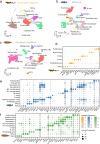
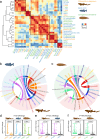

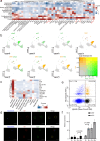
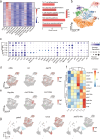
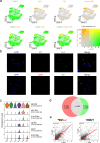
Similar articles
-
Discovery of an unconventional lamprey lymphocyte lineage highlights divergent features in vertebrate adaptive immune system evolution.Nat Commun. 2024 Sep 3;15(1):7626. doi: 10.1038/s41467-024-51763-2. Nat Commun. 2024. PMID: 39227584 Free PMC article.
-
The unexpected role of nurse shark pancreas as a secondary lymphoid organ.J Immunol. 2025 Jul 1;214(7):1493-1503. doi: 10.1093/jimmun/vkaf091. J Immunol. 2025. PMID: 40373270
-
Cartilaginous fish and mammalian connectin evolved independently from an ancestral bony fish-like structure.Sci Rep. 2025 Jul 9;15(1):24715. doi: 10.1038/s41598-025-10916-z. Sci Rep. 2025. PMID: 40634566 Free PMC article.
-
Interactions Between the Innate and Adaptive Immune Responses.Adv Exp Med Biol. 2025;1476:297-308. doi: 10.1007/978-3-031-85340-1_12. Adv Exp Med Biol. 2025. PMID: 40622548 Review.
-
A mini-review on cathelicidin in fish: Gene expression, immune function, and evolutionary insights.Fish Shellfish Immunol. 2025 Oct;165:110463. doi: 10.1016/j.fsi.2025.110463. Epub 2025 May 27. Fish Shellfish Immunol. 2025. PMID: 40441664 Review.
Cited by
-
A synthetic heavy chain variable domain antibody library (VHL) provides highly functional antibodies with favorable developability.Protein Sci. 2025 Apr;34(4):e70090. doi: 10.1002/pro.70090. Protein Sci. 2025. PMID: 40100169
-
The gene regulatory mechanisms shaping the heterogeneity of venom production in the Cape coral snake.Genome Biol. 2025 May 19;26(1):130. doi: 10.1186/s13059-025-03602-w. Genome Biol. 2025. PMID: 40390047 Free PMC article.
-
Immune cell type divergence in a basal chordate.bioRxiv [Preprint]. 2025 May 23:2025.05.20.655184. doi: 10.1101/2025.05.20.655184. bioRxiv. 2025. PMID: 40661343 Free PMC article. Preprint.
-
High-resolution comparative single-cell transcriptomics of doublesex-expressing neurons reveals evolutionary conservation and diversity of sexual circuits in Drosophila.bioRxiv [Preprint]. 2025 May 10:2025.05.06.652433. doi: 10.1101/2025.05.06.652433. bioRxiv. 2025. PMID: 40654601 Free PMC article. Preprint.
-
Discovery of an unconventional lamprey lymphocyte lineage highlights divergent features in vertebrate adaptive immune system evolution.Nat Commun. 2024 Sep 3;15(1):7626. doi: 10.1038/s41467-024-51763-2. Nat Commun. 2024. PMID: 39227584 Free PMC article.
References
Publication types
MeSH terms
Associated data
- Actions
LinkOut - more resources
Full Text Sources

